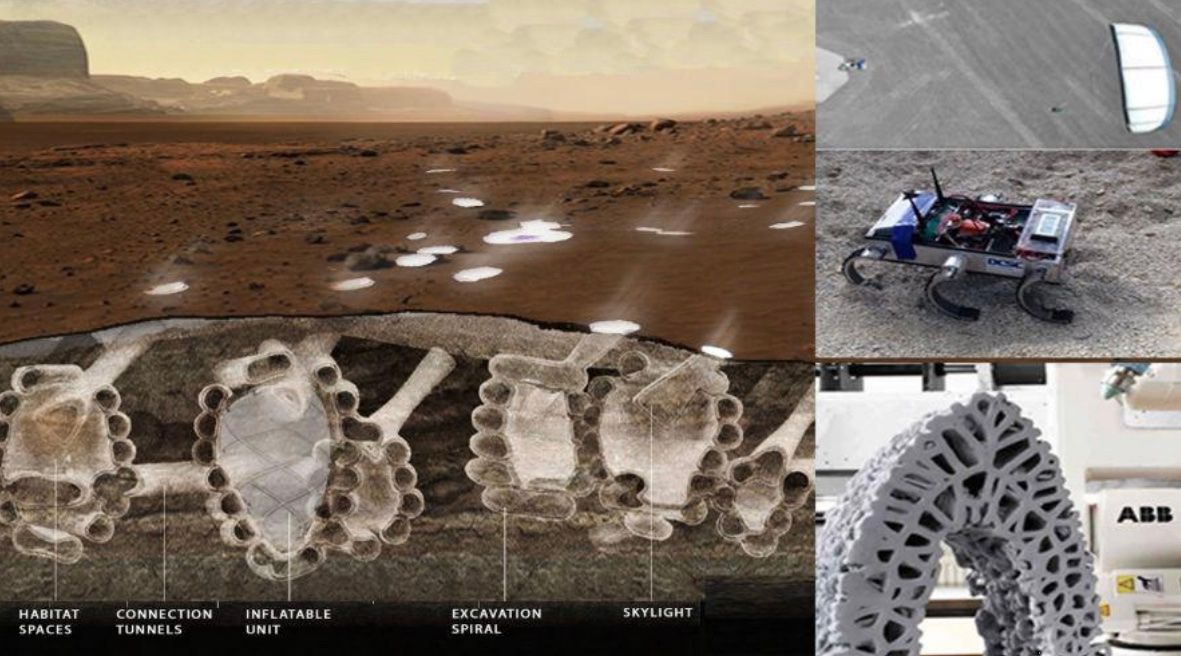Symmetry in nature is pleasing to look at, and even more so when that symmetry is novel. There’s plenty of it to see on Earth, as biological processes have a penchant for patterns. But finding it off-world is trickier, and sometimes more striking. Which is why a picture from HiRISE of some Martian dunes is so spectacular.
Continue reading “Dunes Trapped in a Crater on Mars Form This Interesting Pattern”Researchers Develop a new Framework for Searching for Biosignatures
Planning ahead is something astronomy and space exploration excels at. Decadal surveys and years of engineering effort for missions give the field a much longer time horizon than many others. In the near future, scientists know there will be plenty of opportunities to search for biosignatures everywhere from nearby ocean worlds (i.e. Titan) to far away potentially habitable exoplanets. But it’s not clear what those biosignatures would look like. After all, currently there is only Earth’s biosphere to study, and it would be unfortunate to miss hints of another just because it didn’t look like those found on Earth. Now a team led by researchers at the Santa Fe Institute (SFI) have come up with a framework that could help scientists look for biosignatures that might be completely different from those found on Earth.
Continue reading “Researchers Develop a new Framework for Searching for Biosignatures”New Observations Fail to Confirm a Planet at Barnard’s Star
With all the new discoveries that seem to occur almost monthly, it’s sometimes hard to remember that finding exoplanets is still a relatively new and difficult science. As part of those continual discoveries, back in 2018 a team announced they had found a planet candidate around Barnard’s Star, one of the closest to our own. Now, a different team has re-analyzed the data, collected some new data, and found that the planet detection was likely a false positive.
Continue reading “New Observations Fail to Confirm a Planet at Barnard’s Star”Comets Have Tails of gas, Dust… and Metal?
In outer space, an object’s location has a huge impact on its temperature. The closer the object is to its star, the hotter it most likely is. Heat then plays a major role in what materials are present in that object’s atmosphere, if it has one. Lighter elements such as hydrogen and helium and much easier to take a gaseous state and create an atmosphere. So it came as a surprise when two different teams found much heavier elements in the atmosphere of comets that were relatively far away from the Sun. And one of those comets happened to be from another solar system.
Continue reading “Comets Have Tails of gas, Dust… and Metal?”Shrapnel From Relatively Recent Supernovae Found in the Earth’s Crust
A Japanese oil exploration company recently dug up some samples from the Pacific Ocean floor and donated them to researchers. Those researchers, led by Dr. Anton Wallner at the Australian National University, then found the first ever evidence of a plutonium radioactive isotope that originally came from outer space. Now scientists are trying to understand what could have created that isotope, and another intriguing extraterrestrial one, and what that might have meant for Earth’s cosmic neighborhood a few million years ago.
Continue reading “Shrapnel From Relatively Recent Supernovae Found in the Earth’s Crust”Swarms of Robots Could Dig Underground Cities on Mars
Underground habitats have recently become a focal point of off-planet colonization efforts. Protection from micrometeorites, radiation, and other potential hazards makes underground sites desirable compared to surface dwellings. Building such subterranean structures presents a plethora of challenges, not the least of which is how to actually construct them. A team of researchers at the Delft University of Technology (TUD) is working on a plan to excavate material and then use it to print habitats. All that would be done with a group of swarming robots.
Continue reading “Swarms of Robots Could Dig Underground Cities on Mars”Aircraft Could fly at Mach 17 on Shockwaves From Continuous Detonations
Ever felt the need to get somewhere really, really quickly? Would Mach 17 work? That’s the speed a new prototype engine from researchers at the University of Central Florida (UCF) could potentially hurl an aircraft through the skies, making a trip from New York to Los Angeles in under half an hour. At the heart of this new technology is a new propulsion technology that stabilizes detonations and then uses their shockwaves to provide hypersonic propulsion to an aircraft.
cBright Ejecta Reveals a Fresh Crater on Mars
Meteors hit much harder on Mars than they do on the Earth. Lack of atmosphere obviously contributes to that, but its proximity to the asteroid belt also makes the red planet a more likely target for some gravitationally disturbed rock to run into. Now that we have a satellite infrastructure consistently monitoring Mars, we are able to capture the aftermath of what happens when it is pummeled by space debris, and the results can be dramatic.
Continue reading “Bright Ejecta Reveals a Fresh Crater on Mars”Astronomers Measure the Background Brightness of the Night sky Across the World. Canary Islands are the Darkest in the Survey
Being able to look up at a clear, dark sky is becoming more and more rare in the rich world. Authors, artists, and even scientists have started to express concern about what our lack of daily exposure to a dark night time sky might mean for our psyche and our sense of place in the universe. Now a team has collected photometric data at 44 sites around the world in an attempt to quantify how dark the night sky actually is at different places on the globe. So where was the darkest place surveyed? The Canary Islands.
Continue reading “Astronomers Measure the Background Brightness of the Night sky Across the World. Canary Islands are the Darkest in the Survey”Ingenuity Makes a one-way Trip for the First Time, Flying to a new Landing Site
Ever feel like no matter how far you fly you end up in the same spot? Ingenuity certainly does. The helicopter that has been making dozens of headlines lately for all of the firsts it is achieving as part of its mission on Mars so far has only returned back to its original take-off point. Named Wright Brothers Field, after the brothers who first brought controlled powered flight to Earth, it has been the site of all of Ingenuity’s firsts so far. But now the basic science of Ingenuity’s mission is over and it is time to start moving on, which it did last week to a new “air field”.
Continue reading “Ingenuity Makes a one-way Trip for the First Time, Flying to a new Landing Site”









